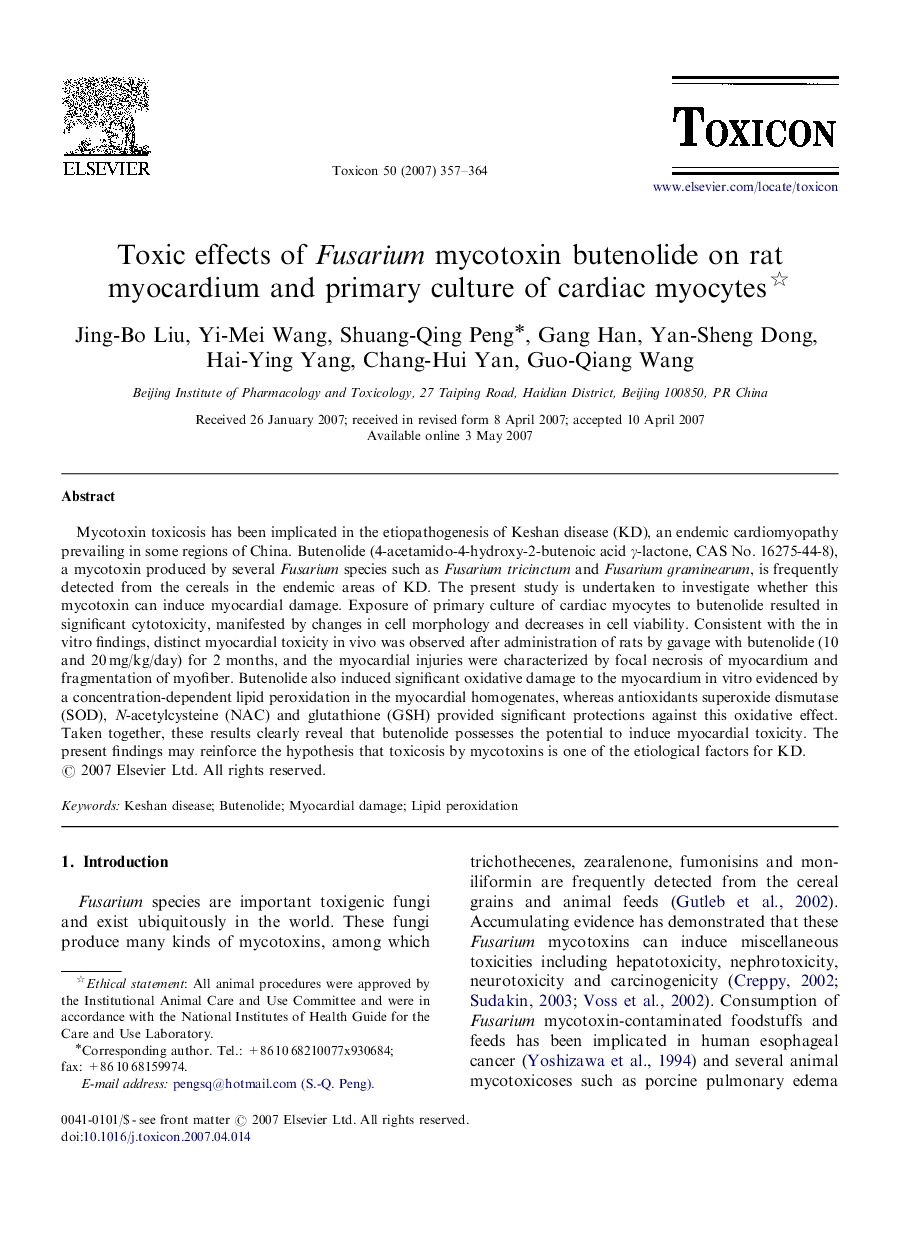| Article ID | Journal | Published Year | Pages | File Type |
|---|---|---|---|---|
| 2066027 | Toxicon | 2007 | 8 Pages |
Mycotoxin toxicosis has been implicated in the etiopathogenesis of Keshan disease (KD), an endemic cardiomyopathy prevailing in some regions of China. Butenolide (4-acetamido-4-hydroxy-2-butenoic acid γ-lactone, CAS No. 16275-44-8), a mycotoxin produced by several Fusarium species such as Fusarium tricinctum and Fusarium graminearum, is frequently detected from the cereals in the endemic areas of KD. The present study is undertaken to investigate whether this mycotoxin can induce myocardial damage. Exposure of primary culture of cardiac myocytes to butenolide resulted in significant cytotoxicity, manifested by changes in cell morphology and decreases in cell viability. Consistent with the in vitro findings, distinct myocardial toxicity in vivo was observed after administration of rats by gavage with butenolide (10 and 20 mg/kg/day) for 2 months, and the myocardial injuries were characterized by focal necrosis of myocardium and fragmentation of myofiber. Butenolide also induced significant oxidative damage to the myocardium in vitro evidenced by a concentration-dependent lipid peroxidation in the myocardial homogenates, whereas antioxidants superoxide dismutase (SOD), N-acetylcysteine (NAC) and glutathione (GSH) provided significant protections against this oxidative effect. Taken together, these results clearly reveal that butenolide possesses the potential to induce myocardial toxicity. The present findings may reinforce the hypothesis that toxicosis by mycotoxins is one of the etiological factors for KD.
